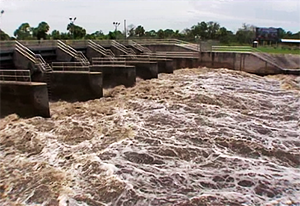After the rainiest January in more than 80 years, the Army Corps of Engineers is releasing more than 10 billion gallons of water a day from Lake Okeechobee to reduce pressure on a dike that protects South Florida from flooding.
The lake level increased in January by 1.5 feet above sea level and hit 16.25 feet last week.
That is well above the range of 12.5 feet to 15.5 feet that the Corps of Engineers tries to maintain to hold down pressure on the dike.
The dike is prone to erosion and ranks nationwide among dikes most vulnerable to failure.
Rainfall across all parts of South Florida since November has averaged 16.22 inches, about 10 inches above normal.
The Corps of Engineers last week increased its lake-draining volume to the maximum levels: 4.9 billion gallons a day into the St. Lucie River to the east, and 6 billion gallons a day into the Caloosahatchee River to the west.
Draining Lake Okeechobee can hurt lakeside tourism and damage the environment. Large lake discharges into salty estuaries can damage coastal fishing areas and spawn algae blooms that make swimming in coastal water hazardous.
But “right now, our main priority is public safety” from potential flooding, Jim Jeffords, chief of Army Corps of Engineers operations in Florida, told the Sun-Sentinel. [Sun-Sentinel] — Mike Seemuth
